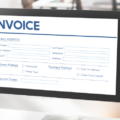E-Invoicing in India: A Comprehensive Guide for Small Businesses
E-invoicing is a new system introduced under GST to streamline the invoicing process and ensure better tax compliance. For small businesses in India, understanding e-invoicing and implementing it correctly is essential. This comprehensive guide covers everything you need to know about e-invoicing in India.
1.What is E-Invoicing?
E-invoicing, or electronic invoicing, is a system where B2B invoices are authenticated electronically by the Goods and Services Tax Network (GSTN) for use on the common GST portal. This system aims to standardize the invoicing process and ensure real-time reporting of invoices.
2.Applicability of E-Invoicing
As of now, e-invoicing is mandatory for businesses with an annual turnover above a certain threshold. Small businesses must check the latest threshold limits to determine if they are required to comply with e-invoicing regulations. Staying updated with notifications from the GST council is crucial.
3.Benefits of E-Invoicing
- Reduction in Errors: E-invoicing reduces manual errors and discrepancies, ensuring accurate reporting.
- Real-Time Tracking: Invoices are reported in real-time, leading to better tracking and management of tax liabilities.
- Enhanced Compliance: Standardized invoicing practices enhance overall compliance with GST regulations.
- Faster Processing: Automated processing of invoices speeds up transactions and improves cash flow.
4.Implementation Steps
- Choose a Suitable E-Invoicing Solution: Select a GST-compliant e-invoicing software that meets your business needs.
- Integration with ERP Systems:Ensure that your accounting or ERP system is integrated with the e-invoicing solution for seamless data flow.
- Generate IRNs: Generate Invoice Reference Numbers (IRNs) for each invoice through the GSTN portal.
- Validate and Upload Invoices: Validate and upload invoices on the GSTN portal for authentication.
4.TDS Certificates
After filing TDS returns, businesses must issue TDS certificates to the deductees as proof of tax deduction. These certificates, known as Form 16 (for salaries) and Form 16A (for other payments), must be issued within the prescribed timelines.
5.Common Challenges and Solutions
- Technical Issues: Small businesses may face technical challenges in integrating e-invoicing solutions with their existing systems. Seeking technical support and training can help overcome these issues.
- Compliance Management: Keeping up with the latest e-invoicing rules and updates requires continuous monitoring. Using automated compliance tools can ease this burden.
Conclusion
E-invoicing is a significant step towards digitalizing the tax compliance process in India. For small businesses, understanding and implementing e-invoicing correctly can lead to numerous benefits, including reduced errors, better compliance, and improved cash flow. Staying informed and using the right tools is key to successful e-invoicing.








